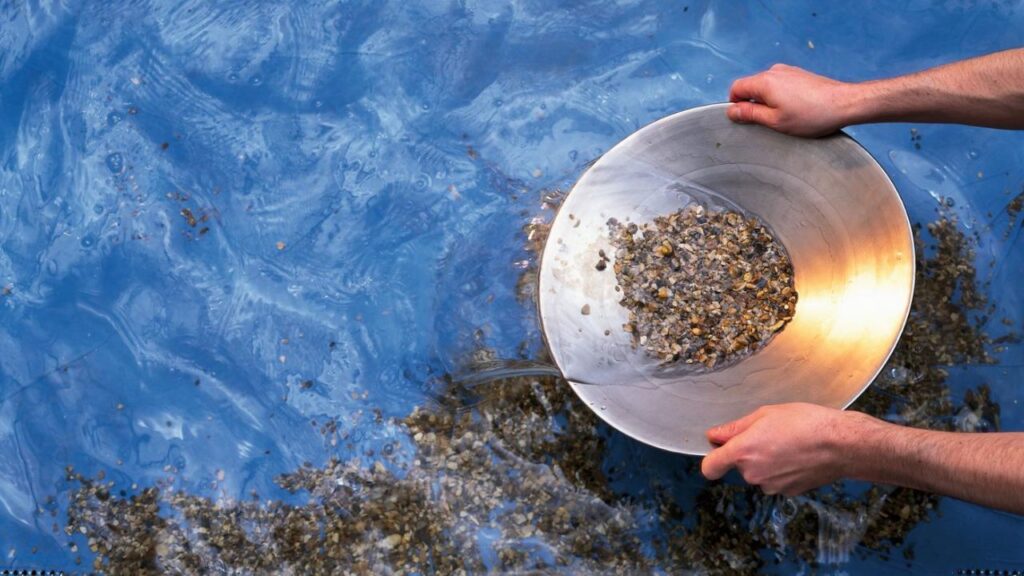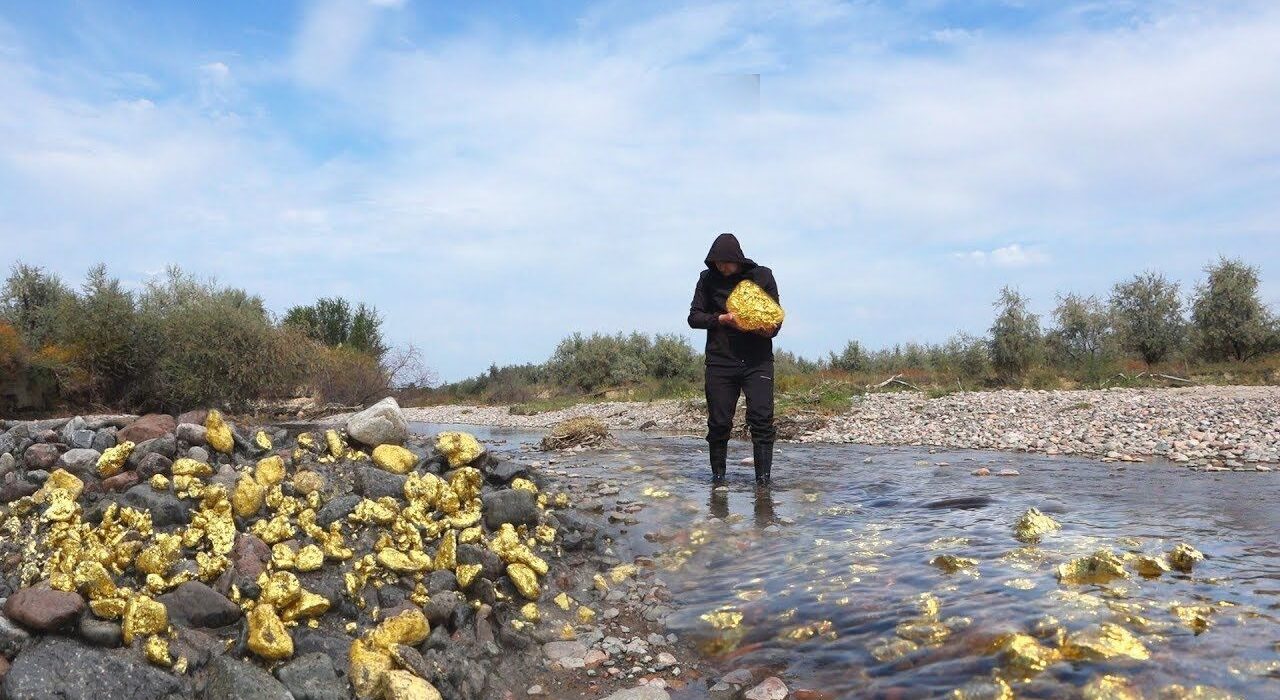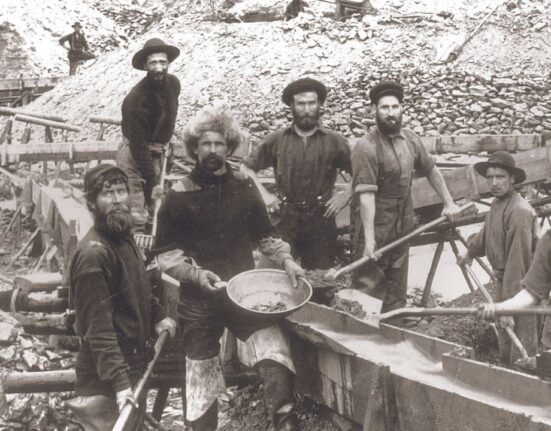DIY Gold Panning Techniques in American Rivers, Select a shallow, slow-moving section to DIY gold pan in American rivers. Fill your pan with sediment and submerge it, then shake and tilt to separate heavier materials like gold from lighter ones. Repeat until only heavy materials remain.
The Art of Gold Panning
At the heart of the American wilderness lies a treasure trove waiting to be discovered—gold. For enthusiasts and adventurers alike, mastering the art of DIY gold panning unlocks a gateway to untold riches and unforgettable experiences. This comprehensive guide delves into the intricacies of gold panning, equipping you with the knowledge and skills necessary to embark on your own golden journey.
The Geology of American Rivers
Gold panning techniques are crucial to understanding the geological processes that govern the distribution of gold in American rivers. Gold deposits are typically found in areas where ancient rivers once flowed, leaving behind concentrations of precious minerals in riverbeds and sedimentary layers.
Comprehending the geological makeup of American rivers is pivotal for gold prospectors, as it aids in identifying potential gold-bearing regions. The intricate erosion, sedimentation, and mineral deposition processes unveil the secrets hidden within these waterways, guiding enthusiasts to prime locations for gold panning adventures.
Identifying Gold-Bearing Regions
- Geological Formation: Gold is often associated with quartz veins and igneous rocks, which indicate potential gold-bearing regions.
- Alluvial Deposits: Over time, erosion and weathering break down gold-bearing rocks, transporting gold particles downstream and depositing them in riverbeds.
Essential Equipment for Gold Panning
You’ll need the right tools to embark on your gold-panning adventure. Here’s a breakdown of the essential equipment required for successful gold panning:
Gold Pan
A gold pan is the cornerstone of any gold panner’s arsenal. It is used to separate gold from sediment and gravel. Opt for a pan with riffles or ridges to trap gold particles efficiently. The gold pan, an indispensable tool for prospectors, is meticulously designed with ridges and sturdy construction to effectively separate gold from sediment and gravel, facilitating the pursuit of precious metal treasures in rivers.
Classifier Screen
A classifier screen helps to sift through large volumes of sediment, allowing you to focus on processing smaller, more concentrated material. This ensures maximum efficiency during the panning process. A classifier screen, an indispensable tool in gold panning, sifts through sediment with precision, separating larger debris from finer material. Its efficient design aids in isolating concentrated deposits, enhancing the effectiveness of the panning process.
Snuffer Bottle
A snuffer bottle is essential for retrieving fine gold particles from the bottom of your gold pan. Its narrow tip enables precise extraction without losing valuable gold dust. A snuffer bottle, a vital tool in gold panning, is designed with a narrow tip for precise extraction of fine gold particles from the bottom of the pan, ensuring efficient recovery without loss.
Magnifying Loupe
A magnifying loupe helps identify gold particles, distinguishing between genuine gold and other minerals. Look for a loupe with high magnification for accurate inspection. A magnifying loupe is a compact optical tool designed to examine small objects, such as minerals and gemstones closely. With its high magnification capabilities, it allows for detailed inspection, aiding in the identification of intricate features and subtle differences.
Mastering Gold Panning Techniques
Location Selection
Choose a promising gold-bearing location along an American river, preferably in areas with a history of gold mining or geological indicators of gold deposition. Choosing the optimal location for gold panning involves meticulously examining potential sites along American rivers, focusing on areas with historical mining significance or geological indicators suggestive of gold deposition.
Sample Collection
Collect sediment samples from different spots along the riverbed, paying close attention to areas with concentrated black sand, a common indicator of gold presence. Gathering sediment samples during the gold panning process involves carefully selecting various locations along the riverbed, focusing on areas rich in black sand and geological indicators of gold presence to ensure comprehensive exploration.
Panning Process
- Fill your gold pan with sediment and water, ensuring it’s roughly two-thirds full.
- Submerge the pan underwater and agitate it in a circular motion, allowing heavier materials, including gold, to settle at the bottom.
- Tilt the pan slightly forward and continue swirling, gradually washing away lighter sediment.
- Periodically remove larger rocks and debris, focusing on the finer material containing potential gold particles.
- Use the snuffer bottle to extract any visible gold particles trapped in the bottom of the pan.
Embark on Your Golden Adventure
Armed with the knowledge of DIY gold panning techniques, you’re ready to embark on your golden adventure in the rivers of America. Remember, patience and persistence are key virtues in the pursuit of gold. With this comprehensive guide, you’ll be well-equipped to uncover the hidden treasures beneath the surface of American rivers. So grab your gear, head out into the wilderness, and let the thrill of discovery guide you on your journey to gold-rich territories.
The Secrets of DIY Gold Panning Techniques in American Rivers
Gold panning, a timeless pursuit that intertwines adventure with the allure of treasure, has long captured the imagination of prospectors and enthusiasts alike. While historically associated with the Gold Rush era, this age-old practice continues to thrive today as a recreational activity, offering seekers the opportunity to unearth nature’s hidden treasures amidst the rugged landscapes of American rivers. This guide delves into the art of DIY gold panning, exploring techniques, tips, and essential know-how to embark on your glittering journey.
The Basics: Understanding Gold Panning
Before embarking on your gold panning adventure, it’s essential to grasp the fundamental principles behind this ancient practice. At its core, gold panning involves the meticulous process of sifting through sediment-laden riverbeds in search of small gold particles. Armed with a pan and sheer determination, prospectors rely on gravity and water flow to separate the precious metal from surrounding debris.
Choosing the Right Location: Where to Strike Gold
Selecting the perfect gold panning location is paramount to your success. While American rivers boast a rich history of gold deposits, not all stretches of water are created equal. Researching and identifying prime gold-bearing areas is key, with factors such as geological formations, past mining activity, and accessibility all playing a crucial role in determining potential hotspots.
Mastering Technique: Tips for Effective Gold Panning
Gold panning requires skill, patience, and a keen eye for detail. Begin by filling your pan with gravel and sediment from the riverbed, ensuring to submerge it underwater. With a gentle swirling motion, agitate the contents of the pan, allowing lighter materials to wash away while heavier particles, including gold, settle at the bottom.
The Art of Patience: Persistence Pays Off
As with any endeavor, patience is the ultimate virtue in gold panning. Expect to dedicate ample time and effort to perfecting your technique and honing your senses to distinguish between fool’s gold and genuine treasures. Remember, each speck of gold unearthed represents a physical reward and testament to your perseverance and dedication.
Safety First: Precautions for Responsible Panning
While the allure of gold panning may be irresistible, it’s essential to prioritize safety and environmental stewardship throughout your expedition. Always adhere to local regulations and guidelines, respect private property rights, and leave no trace of your presence behind. Additionally, equip yourself with proper gear, including sturdy footwear and sunscreen, to ensure a safe and enjoyable experience.
Embracing the Adventure: The Thrill of Discovery
Beyond the tangible rewards of gold panning lies the intangible thrill of discovery and adventure. Whether you’re a seasoned prospector or a novice enthusiast, each expedition promises new experiences and the chance to forge a deeper connection with nature. So, don your prospecting gear, set forth with a spirit of curiosity, and prepare to uncover the hidden treasures that await beneath the shimmering surface of American rivers.
Some Points of DIY Gold Panning Techniques

DIY Gold Panning Techniques in American Rivers YouTube: Discover the art of gold panning firsthand through do-it-yourself techniques showcased on YouTube. Learn valuable skills and insights into finding and extracting gold from the rivers of America. From basic panning methods to advanced strategies, this resource offers a wealth of knowledge for aspiring prospectors.
American River Gold Panning Map: Navigate your way to potential gold-rich locations along the American River with the help of a detailed gold panning map. Uncover designated areas and hotspots known for yielding precious gold nuggets, guiding your prospecting adventures with precision and efficiency.
How to Pan for Gold in a River: Master the fundamental techniques of gold panning in a river environment. From selecting the right spot to understanding the motion of water and sediment, this guide provides step-by-step instructions to effectively sift through riverbeds and uncover hidden treasures.
Homemade Gold Panning Equipment: The world of DIY gold prospecting gear with homemade equipment tailored to your needs. Whether crafting a sturdy gold pan or constructing a reliable sluice box, unleash your creativity and resourcefulness to fashion custom tools for successful gold recovery.
American River Gold Inc.: American River Gold Inc. is a reputable entity engaged in gold exploration and mining activities along the American River and beyond. Committed to responsible mining practices and sustainable development, this company plays a significant role in the gold industry’s landscape.
How to Pan for Gold Without a Pan: Learn to improve and adapt to your surroundings by panning for gold without traditional equipment. Discover alternative methods and makeshift tools for extracting gold from riverbeds, showcasing the ingenuity and resilience of the modern-day prospector.
How to Pan for Gold in a Stream: Embark on a journey to unlock the secrets of gold panning in stream environments. From understanding the geological features of streams to mastering specialized techniques tailored to their unique characteristics, this guide equips prospectors with the knowledge needed to thrive in stream-based gold prospecting endeavors.
Conclusion
DIY gold panning in American rivers offers excitement, challenge, and rewards for those willing to embark on the adventure. By mastering essential techniques, choosing optimal locations, and embracing the spirit of exploration, you can unlock the timeless allure of gold prospecting while forging unforgettable memories. So, grab your pan, follow the glittering trail, and let the rivers of America reveal their golden secrets to you.
FAQ
Can I Pan for Gold on the American River?
Yes, you can pan for gold on the American River. It’s a popular activity for enthusiasts and tourists alike. Remember to obtain any necessary permits and follow regulations to ensure a responsible and enjoyable experience. Happy prospecting!
What American Rivers Can You Still Find Gold in?
You can still find gold in several American rivers, including the American River in California, the Rogue River in Oregon, and the Animas River in Colorado. These rivers have a history of gold mining and continue to attract prospectors.
How to Simulate Panning for Gold?
Gather sand, gravel, and sma:
- Gather in a shallow container to simulate panning for gold.
- Dd water and swirl the mixture to mimic natural sedimentation.
Carefully tilt the container to let lighter materials wash away, leaving heavier “gold” particles behind.
Hat Was the Easiest Way to Find Gold in Rivers?
The easiest way to find gold in rivers is through panning. Using a shallow pan, scoop up sediment from the riverbed and gently shake it, allowing the heavier gold particles to settle at the bottom, while lighter materials wash away.
Can You Pan for Gold in any Creek?
Not every creek holds gold, but some might. Research local regulations and geological surveys to find promising areas. Basic equipment like a pan and shovel is necessary. Patience and perseverance are key; success isn’t guaranteed, but the adventure is rewarding.
Is There Gold in the South Fork of the American River?
Yes, there is gold in the South Fork of the American River. This river, located in California, was one of the sites where significant amounts of gold were discovered during the Gold Rush era in the mid-19th century.
Who Spilled the Secret of Gold Being Found?
DIY Gold Panning Techniques in American Rivers, The prospector unwittingly blurted out the discovery of gold to a passing stranger, who spread the news like wildfire through the town. Soon, the once-secret location became a bustling gold rush site, drawing prospectors from far and wide.




